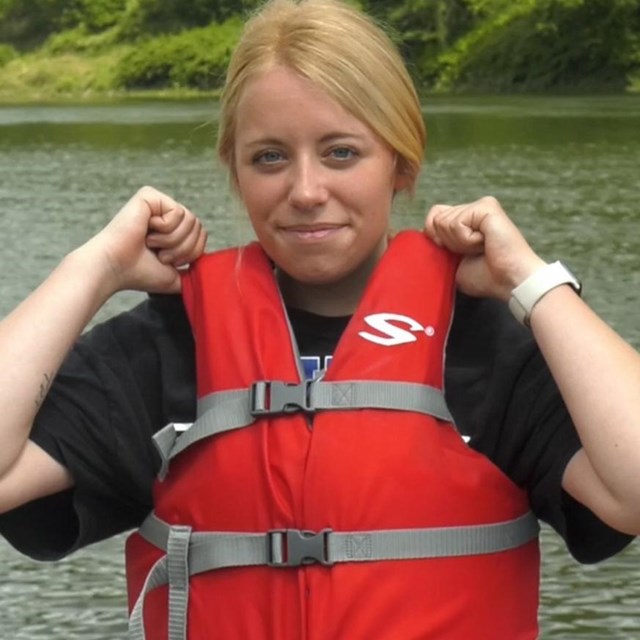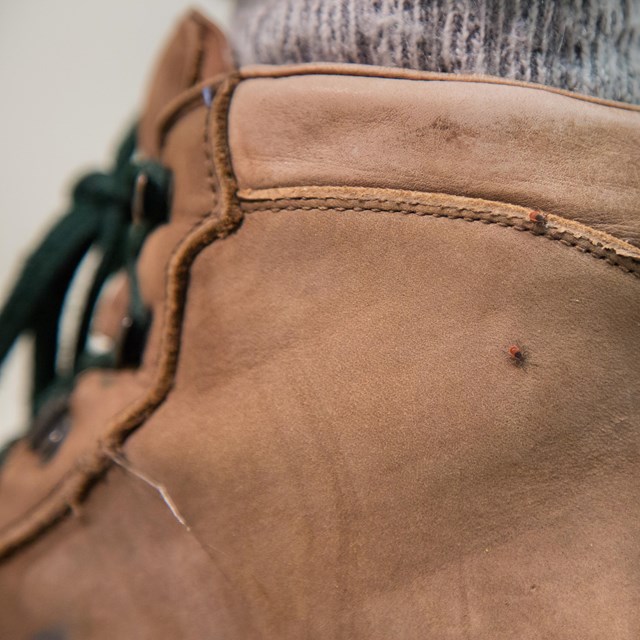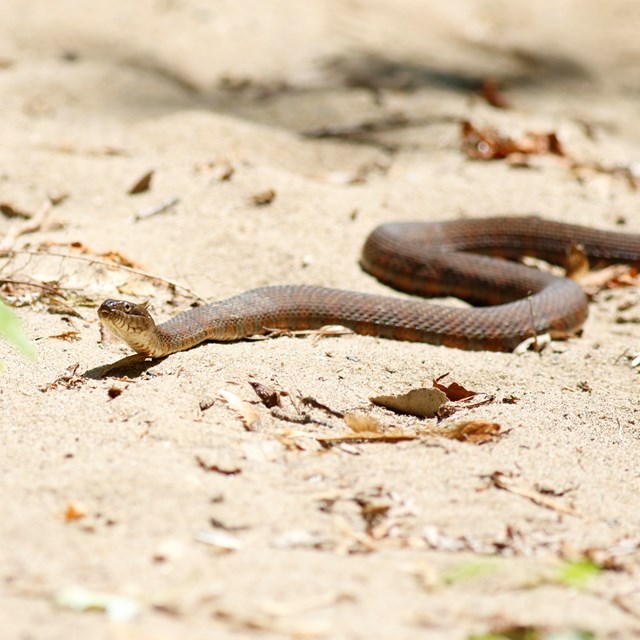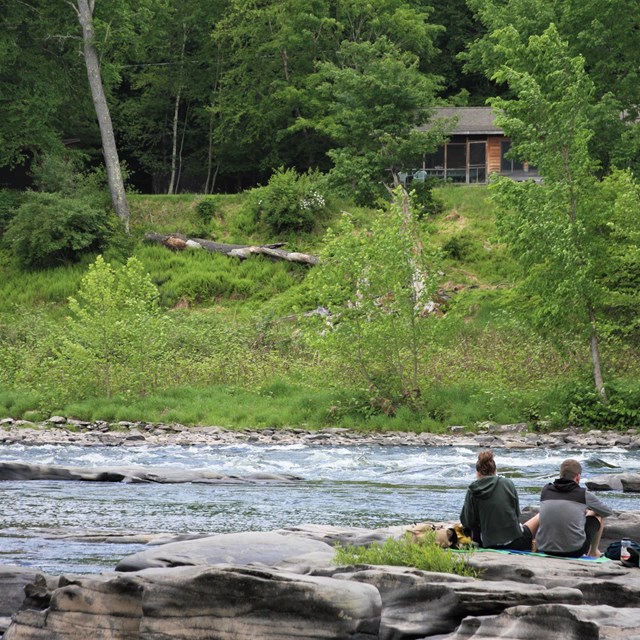|
Visit our keyboard shortcuts docs for details
The Delaware River is a great place to enjoy a variety of recreational activities such as rafting, canoeing, kayaking, and fishing. However, it is important to not only have fun but also stay safe while you are out on the water. River obstacles, deceptively fast currents, steep drop-offs, and year-round cold-water temperatures are just a few things that can catch unprepared river users by surprise. We strongly recommend anyone interested in going on or in the river to watch this safety video beforehand. Top 10 Safety Tips:1. Wear a Properly Fitted Life JacketThe river can be deceptive and dangerous. On average, there are 2 drowning incidents each year at the Upper Delaware River. Do not overestimate your swimming abilities. Experienced and strong swimmers have drowned in the river in the past. Those in a boat are also strongly recommended to wear a life jacket. Wearing a life jacket and wearing it correctly is the safest thing you can do while on or in the river. Life jackets should be in good condition and fit snugly to the person so that it does not slide over the head when pulled. See the River Rules section for more details on who and when life jackets must be worn. 2. Watch Out for TicksThe Upper Delaware region is home not just to bald eagles and black bears, but also ticks. Some tick species can carry Lyme disease, a bacterial infection which can lead to long-term health issues if not treated quickly. Ticks live in grasses, bushes, and brush. To reduce chances of getting bitten, stay on trails and avoid bushy, grassy areas. After spending time outdoors check yourself and your pet for ticks. Although ticks are most active in the summer, they can still bite and contract disease during other seasons of the year. Learn more on how to reduce the chances of being bitten and what to do if you are bitten. 3. Stay HydratedDrink plenty of water when hiking on trails and on the river. Drinking water will help keep you cool and reduce the likelihood of heat exhaustion and dehydration. Alcohol consumption is prohibited with the park boundaries and while on the river. Alcohol is not an adequate substitute for water when dehydrated. Glass is also prohibited within park boundaries. Broken glass is dangerous for visitors and wildlife. 
4. Wear the Right Clothes, Bring the Right GearIn the summer, a hat, sunscreen, and other sun protection are essential. Always bring an extra towel and change of clothes in case you get wet. Wear a life-jacket if near, on, or in the water. In the winter, temperatures can drop below freezing, so bundle up and wear plenty of layers, along with a hat and gloves. The bottom of the river can range from slippery to sharp, so wearing closed-toed shoes are highly recommended to be worn year-round, for any activity. And last but certainly not least, don’t forget to bring water and salty snacks! 5. Know the Signs for HypothermiaHypothermia occurs when the body is at a dangerously low temperature and is caused by extended exposure to very cold temperatures. Hypothermia is not just an issue for the winter. The water temperature is often much colder than the air temperature, and even on a warmer day the river water can still be very cold. If you suspect you or someone else may have hypothermia, move them to a warm, dry place with shelter. Rest and replace any wet clothing with dry clothing. Have them drink something warm. Contact a medical professional if their condition does not improve. Symptoms
6. Know the Signs for Heat Exhaustion and Heat StrokeHeat Exhaustion occurs when the body has lost too much water and salt, usually due to excessive sweating and heat exposure. Heat exhaustion can be treated by immediately resting; moving to a cool, shady place; drinking water and fluids; supplementing fluids with food; and loosening clothes. If symptoms persist after two hours, seek medical help. Severe heat exhaustion can result in Heat Stroke. Heat stroke is when the body can no longer control its temperature and can be fatal if not treated immediately. If you suspect heat stroke, call 911 or seek medical assistance immediately. While waiting for assistance, move the person to a cool, shaded place and cool the individual down as much as possible. Symptoms
Learn more about the warning signs of heat-related illnesses. 
7. Have a PlanMake a plan and prepare for emergencies. Always call 911 in case of emergencies and save local emergency contact numbers ahead of time. However, be aware that cell phone coverage is spotty throughout the park and you may not have cell phone reception in certain areas. For safety, always let someone else know where you are going and when you expect to return. If with a group, set up places and times to meet up and reconvene. 8. Check the Weather and Park ConditionsPlan ahead and check the weather so you know what to expect, bring the right gear, and dress appropriately. Check our weather page for information on what to expect and the current conditions page for any special notifications and current park conditions. Be mindful that many roads in the park are local roads which are winding and may be narrow. Drive safe and slow, especially during poor weather. During heavy rain, there may be risk of flooding. During snow, it may take some time for local roads to be plowed. 
9. Give Animals SpaceA large variety of wildlife call the Upper Delaware River region home. Please be respectful and keep your distance for their safety and yours. Do not feed wildlife and keep your pets on a leash. Animals which have been seen in the park’s boundaries include but are not limited to deer, various birds, black bears, bobcats, coyotes, bats, foxes, and snakes. The only venomous snake likely to be encountered in the Upper Delaware Region is the Timber Rattlesnake. However, the Timber Rattlesnake is not aggressive and unlikely to bite a person unless provoked. 10. Stay on Public LandsUpper Delaware Scenic and Recreational River is surrounded by private, state, and federal agency property. This includes property alongside the Delaware River. When on the river, do not disembark on private property or where there are houses. When hiking, stay on trails. During hunting season, wearing bright colors such as orange or pink is encouraged. 
NPS River Safety Rules:
Stay Informed:River conditions can change very quickly. Stay informed by calling the river hotline line at 845-252-7100 for daily information about river height, air and water temperatures, boating conditions, and general river safety. The hotline is available 24 hours a day, 7 days a week, from April 1st through October 31st. Emergency Contact Numbers:In an emergency call 911. National Park Service 24 Hour Dispatch: 570 426-2457 New York State Police Pennsylvania State Police Come Prepared!
|
Last updated: May 12, 2025













